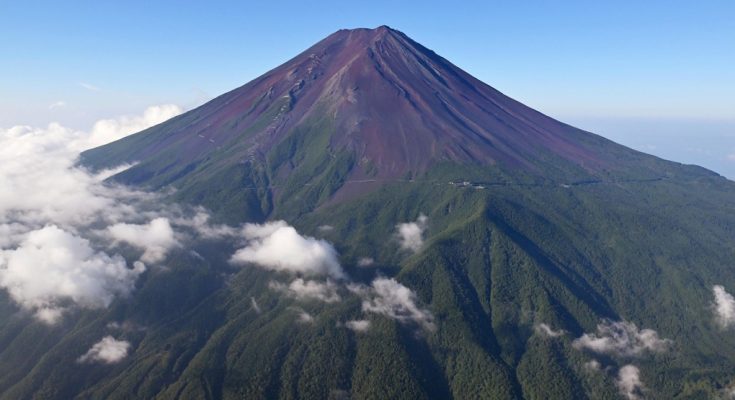BANDUNG, SEATIZENS – As October draws to a close, Mount Fuji, Japan’s iconic peak, remains bare, absent of its traditional snow covering for the first time in recorded history. Typically, snow begins blanketing Japan’s tallest mountain by early October, yet this year, October 29 passed without any trace of snow on the summit. The delay, attributed to warmer-than-usual autumn temperatures, stands as a stark reminder of climate change’s growing impact on Japan’s landscapes.
The Japan Meteorological Agency has tracked Mount Fuji’s snowfall since 1894, recording first snowfalls as early as October 2 in most years. Recent years have seen later snow arrivals, like last year’s October 5 snowfall. But this October marks the longest wait ever for Mount Fuji’s first snow in 130 years. Meteorologist Shinichi Yanagi of the Kofu Local Meteorological Office explained that unusually high autumn temperatures, which extended the summer heat, alongside continuous rainfall, have prevented the formation of snow on the peak.
“Because temperatures have stayed unusually high and rain has continued, we have not had snow,” Yanagi told CNN. Previous record-setting late snowfalls occurred on October 26 in both 1955 and 2016, but this year has set an unprecedented delay.
Japan experienced record-breaking summer temperatures this year, the hottest recorded season since data collection began in 1898. The average summer temperature from June through August was 1.76 degrees Celsius above normal, shattering the previous record set in 2010. Early October temperatures remained high, with 74 cities still recording over 30 degrees Celsius, according to Climate Central, a nonprofit research organization that points to climate change as a major contributor to Japan’s extended warmth.
The Role of El Niño and the Global Climate Crisis
The delayed snowfall at Mount Fuji mirrors a broader, global trend of rising temperatures driven by climate change. This year is on track to become the hottest year in recorded history, due to a combination of climate change and the El Niño phenomenon, which has further exacerbated global heat levels. Scientists have long warned that keeping global warming below 1.5 degrees Celsius above pre-industrial levels is critical to prevent the most severe consequences of climate change.
A recent study published in January found that climate change has caused snowpacks to diminish significantly across the Northern Hemisphere over the past 40 years, a troubling trend that Mount Fuji’s delayed snowfall reflects. The phenomenon underscores potential long-term consequences not only for Japan’s ecosystems but also for its tourism, water resources, and agricultural stability.
Potential Impacts on Tourism, Water Supply, and Public Health
Mount Fuji’s delayed snowfall could have cascading effects on various sectors. The UNESCO World Heritage site, standing at 3,776 meters (12,388 feet), draws millions of tourists each year who come to hike or admire its renowned snow-capped summit. However, warmer winters could increasingly alter this beloved sight, affecting tourism and local economies.
RELATED POST: Iran Responds to Israeli Attacks, Calls for Global Solidarity Against Aggression
Additionally, climate change’s impact on seasonal weather patterns could shift water supply dynamics in Japan, while extended warm seasons may exacerbate public health issues, such as respiratory allergies and vector-borne diseases. The environmental shift at Mount Fuji underscores a larger, pressing reality as Japan and the world grapple with the effects of a warming climate.
(Mars)




